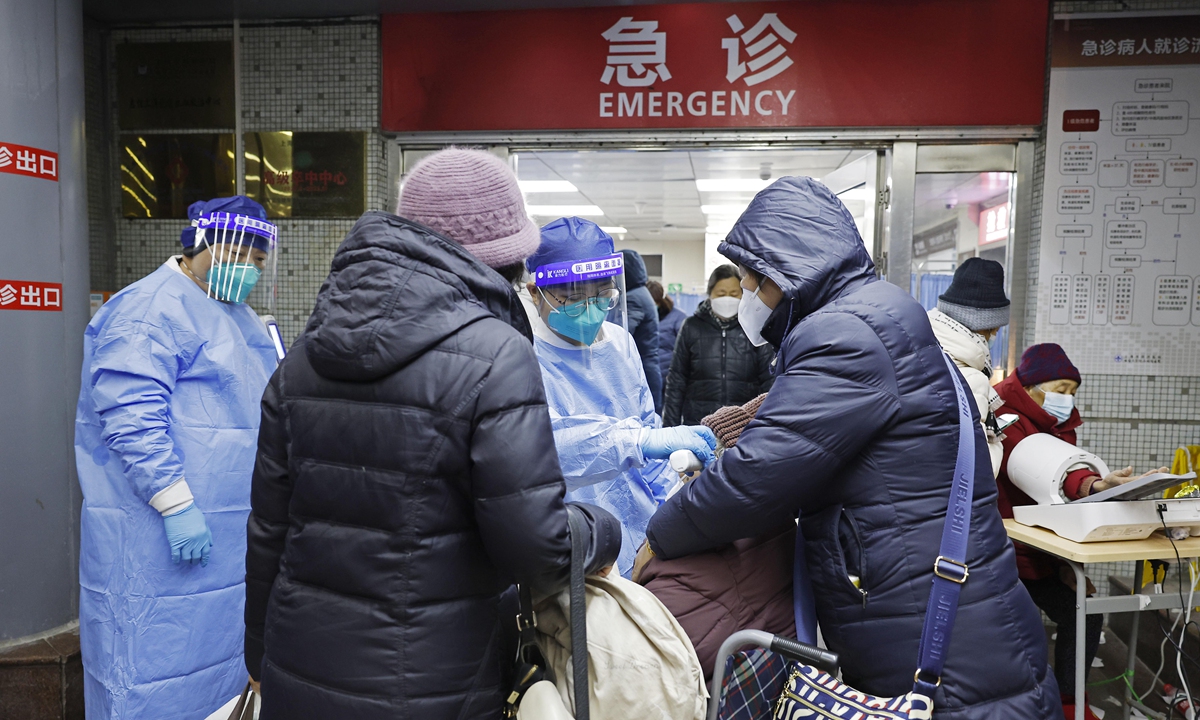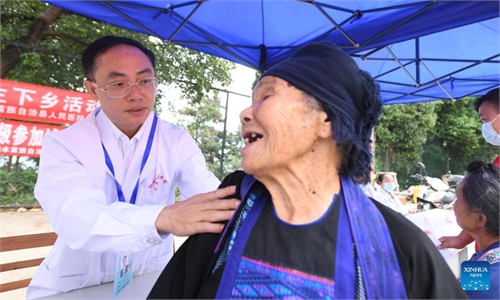COVID infection peak in mega cities nearing end, expected to affect rural areas soon: leading Chinese research team

Doctors at Tongji Hospital affiliated to Tongji University check on an emergency patient in Shanghai on December 26, 2022. Photo: IC
In several of China's metropolitan cities including Beijing, Shanghai and Guangzhou, the COVID-19 infection peak is expected to end around New Year's Day, according to a latest study by a leading Chinese research team.
The outbreaks are expected to mainly affect rural areas and small and medium-sized cities between New Year's Day and the Spring Festival, which falls on January 22, the study also showed.
According to the mathematical model constructed by the research team, the current round of the COVID-19 epidemic peak is expected to be nearing its end in metropolitan cities. The research team's predictions about the progress of the outbreak in major cities are in line with the relevant data released on Sunday in Guangzhou.
Since December 23, the number of patients attending fever outpatient clinics in the city began to decline, with the number of visits dropping from about 60,000 to 19,000 in a single day, reported the Yangcheng Evening News, citing data from the Guangzhou Municipal Health Commission on Sunday.
According to the city's health authorities, the current outbreak in Guangzhou has reached its peak and is expected to reach the end before the Spring Festival.
However, comparative analysis of data based on urban and suburban areas in Chongqing Municipality in Southwest China suggests that the peak of the epidemic is delayed in the suburbs.
Peak infections in rural areas and small and medium-sized cities are expected to occur in mid-to-late January, and these peaks may arrive earlier due to the upcoming Spring Festival rush, known as chunyun, according to the study.
The study highlighted that of particular concern is the lack of health care resources in rural areas and small and medium-sized cities in China, as well as the large number of the elderly and people with underlying diseases. The flow of urban and rural populations during chunyun will also greatly influence the course of the epidemic.
Chen Saijuan, one of the study's main authors who is an academician of the Chinese Academy of Engineering, said that with the New Year's Day arriving and Spring Festival approaching, rural areas with relatively weak medical resources must attract key attention.
This research result was recently published in the paper "Primary assessment of the diversity of Omicron sublineages and the epidemiologic features of autumn/winter 2022 COVID-19 wave in Chinese mainland," which was published in the journal Frontiers of Medicine.
The study also analyzed the types of COVID-19 strains currently prevalent in China by sequencing the virus among patients in Shanghai in fall and winter 2022.
According to the study, 30 Omicron strains that have been identified globally were measured in more than 300 randomly selected viral whole-genome sequences from patients in Shanghai, including mainly BF.7, BA.5.2, and the recently emerged BQ.1 and XBB.
No new mutant strains were identified in the sequences.
Of the 5,706 patients with symptomatic COVID-19 infection hospitalized in Shanghai between September 1 and December 26, 2022, 5533 patients, or 96.97 percent, had mild or common symptoms. The infection of the other 173 patients, or 3.03 percent, however, progressed to severe or critical illness, including 20 patients with COVID-19 infection only and 153 patients with other disease aggravated by COVID-19 infection.
Global Times

